
I have been practicing travel photography for several years, and I also have my vlog, so I know for sure that the varying lighting conditions and camera shakes are the most serious issues for shooters.
That's why I always dreamed of a camera with IBIS, which would eliminate the need to carry a tripod everywhere to take sharp pics and smooth video even on the go, whether I want to capture the beauty of the landscapes at sunset or explore busy city streets.
Although IBIS was a feature of high-end cameras for photography, nowadays it is fitted in budget models too.
As now this technology has become more affordable, I decided to test the most popular cameras with IBIS among photographers on Reddit to help you choose the right model. I listed devices from such top brands as Canon, Fujifilm, Nikon, Panasonic, Sony, and Olympus, in different price categories and sizes.
The R7 uses IBIS technology to get rid of camera shake across 5 axes, reaching up to 8EV shutter speed compensation. I was impressed that it is capable of 7EV compensation when I equipped it with a new RF-S 18-150mm f3.5-6.3 IS STM kit lens.
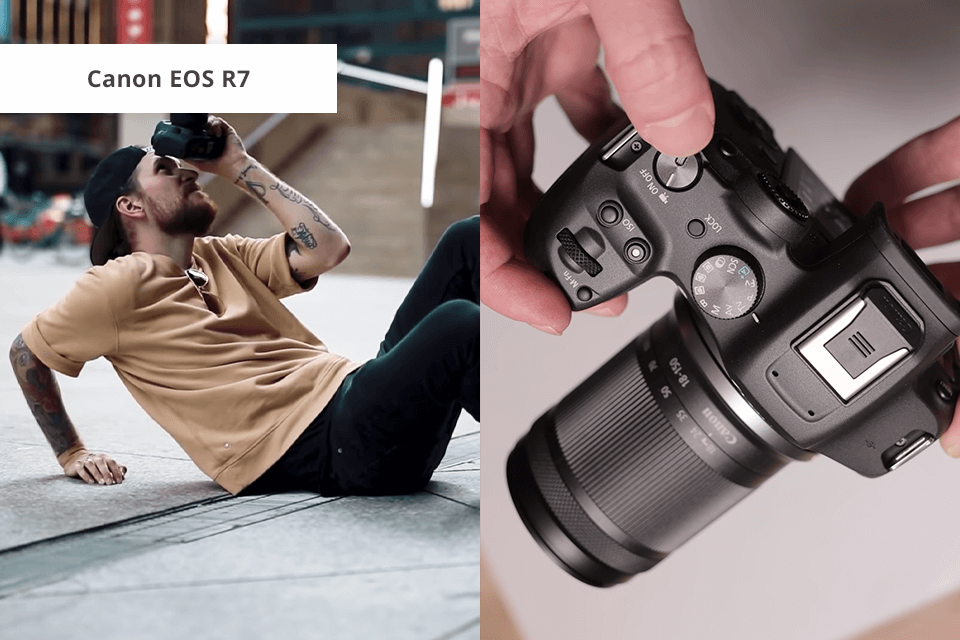
As for me, the greatest ability of this Canon camera with IBIS is its horizon correction feature that allows adjusting the sloping horizon hassle-free. I’m sure that any travel photographer and videographer would appreciate this option, which analyzes the sensor’s movement to correct the horizon, showcasing the result in VF on the camera’s screen, which is very convenient.
As the R7 model is advertised as a hybrid camera, the ability to handheld it while shooting makes it the best vlogging camera for everyone who is involved in content production. The built-in IBIS technology allows me to produce stable and steady travel clips, which makes it even more appealing.
Specs:
|
Type |
Mirrorless |
|
Sensor |
32.5Mp APS-C format (22.3 x 14.8mm) CMOS |
|
ISO |
100-32,000 expandable to 51,200 |
|
Video resolution |
4K, Full HD |
|
Viewfinder |
0.39-type 2,360,000-dots OLED EVF |
|
AF system |
Dual Pixel CMOS II AF phase detection with up to 5915 positions and 651 automatically selectable points |
|
Dimensions |
132.0 x 90.4 x 91.7mm |
|
Weight |
612g including battery and memory card |
One of the standout features of the R6 model is a cutting-edge AF, which performs well in low light (down to -6.5EV), enabling me to shoot in dim environments while traveling. The embedded 5-axis IBIS technology, combined with Canon’s IS lenses, ensures even greater steadiness, delivering up to 8 stops of stabilization.
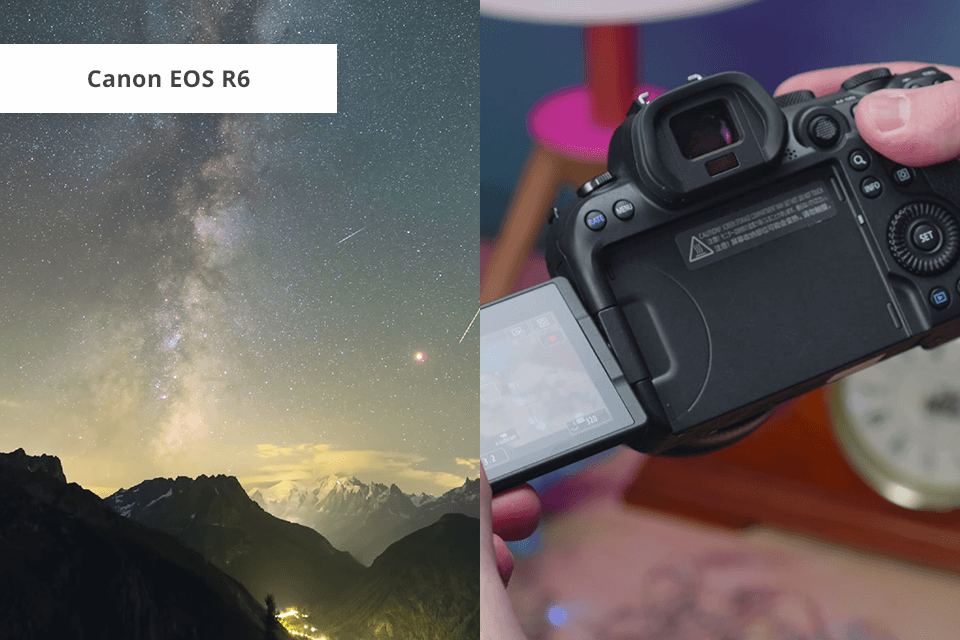
Thanks to this mirrorless camera with IBIS, I could bring my experience of shooting handheld videos in low light to a new level. I took advantage of the R6 model to take handheld pics of the Milky Way. Due to a high level of stability and excellent technique, I managed to shoot 5-sec handheld exposures achieving spectacular results.
Although R6 does not use the most sophisticated 20-MP sensor, the images feature a high level of detail and offer amazing dynamic range. This is why I regard it the best low light video camera for trips. In addition, the camera is fitted with dual card slots and an articulating screen, which is especially useful for me when working on the go.
Specs:
|
Type |
Mirrorless |
|
Sensor |
20Mp Full-frame Dual Pixel CMOS AF II |
|
ISO |
Photo: 100-102,400 expandable to 50-204,800, Video: 100-6,400, expandable to 204,800 |
|
Video resolution |
4K, Full HD |
|
Viewfinder |
0.5-inch 3.69million-dot OLED electronic viewfinder with 120fps refresh rate |
|
AF system |
Dual Pixel CMOS AF II phase detection with 6,072 points in photo and 4968 points in video mode |
|
Dimensions |
138.4 x 97.5 x 88.4mm |
|
Weight |
598g / 680 g with card and battery |
As Canon used lens-based stabilization in its previous models, its EOS R5 has a 5-axis IBIS, excelling all their previous models. This feature compensates difference between 1/500 sec and 1.3 sec, allowing one to take sharp and crisp photos in poor lighting conditions.
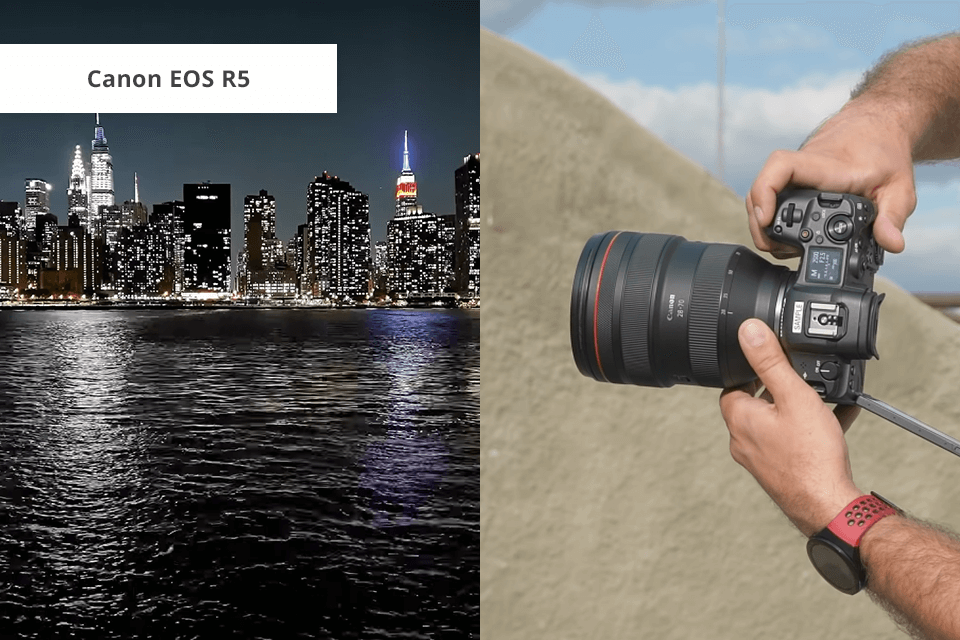
What I especially like about this camera with best IBIS is that it uses an RF mount's 12-pin connection to seamlessly work with any lens stabilization. Thanks to it, I could attach various Canon lenses to my device without degrading the level of stabilization.
When trying out this camera, I was pleased with its performance in low light, so I did not need to use a travel tripod. Whether I was capturing amazing night cityscapes or handheld long exposures, the resulting photos were crisp and clear. As this model is fitted with a 45MP sensor, a high level of detail and dynamic range are guaranteed, so my images always feature rich colors and fine details.
Specs:
|
Type |
Mirrorless |
|
Sensor |
45Mp Full-frame Dual Pixel CMOS AF II |
|
ISO |
Photo: 100-51,200 expandable to 50-102,400, Video: 100-25600, expandable to 51,200 |
|
Video resolution |
Raw recording 8K, Uncropped internal recording 4K |
|
Viewfinder |
0.5-inch 5.76million-dot OLED electronic viewfinder with 120fps display and 0.76x magnification |
|
AF system |
Dual Pixel CMOS AF II phase detection with 5940 points in stills and 4500 points in movie mode |
|
Dimensions |
135.8 x 97.5 x 88mm |
|
Weight |
650 g / 738 g with card and battery |
Fujifilm launched X-T4, its first APS-C camera with IBIS, which quickly became one of the best Fujifilm cameras due to its versatility and the stabilization system that delivers up to 6.5 stops of stabilization. Thanks to robust weather sealing protection, I like using it for shooting in various weather conditions in different settings.
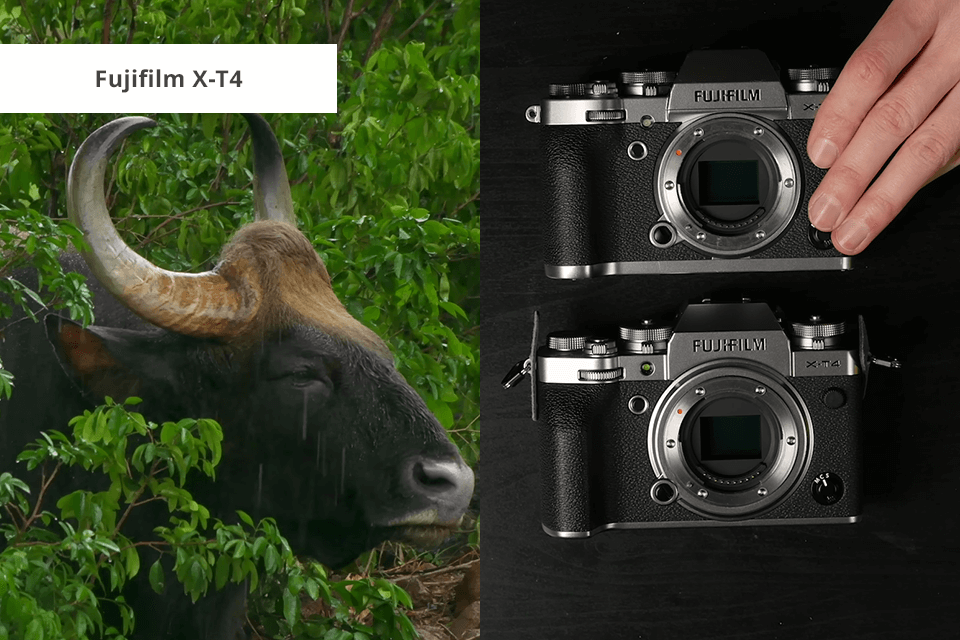
Another highlight of this camera is the improved AF system. Thanks to its fast and accurate performance, I can take crisp photos even of moving subjects, which is especially beneficial when using as a camera for wildlife photography.
Another upgrade is a fully articulating screen, which is extremely helpful when vlogging and shooting from unusual angles. A more durable battery allows shooting for a longer time without constant recharges, which is pivotal for travel shooters.
Specs:
|
Type |
Mirrorless |
|
Sensor |
23.5mm x 15.6mm (APS-C) X-Trans CMOS 4 with primary color filter |
|
ISO |
up to 12800 / 160 - 12800 (1/3 step) expendable to 80 / 100 / 125 / 25600 / 51200 |
|
Video resolution |
DCI 4K, Full HD |
|
Viewfinder |
0.5 inch approx. 3.69 million dots OLED Color Viewfinder |
|
AF system |
Single AF / Continuous AF / MF; Intelligent Hybrid AF (TTL contrast AF / TTL phase detection AF) |
|
Dimensions |
134.6 x 92.8 x 63.8 mm |
|
Weight |
526g / 607g with card and battery |
The Fujifilm X-S10 is quite powerful for a price tag under $1,000. On top of that, it has IBIS, which also works during video recording, which really helped me eliminate fine tremors caused by hand-held travel shooting. As this model is quite compact and has a small weight, it is an ideal option for hybrid content creators like me.
If a small size is your priority, I recommend the Fujinon XC 15-45mm kit lens, which I used for testing this camera. Its optical performance is decent, it has a small size, is light and budget-friendly.
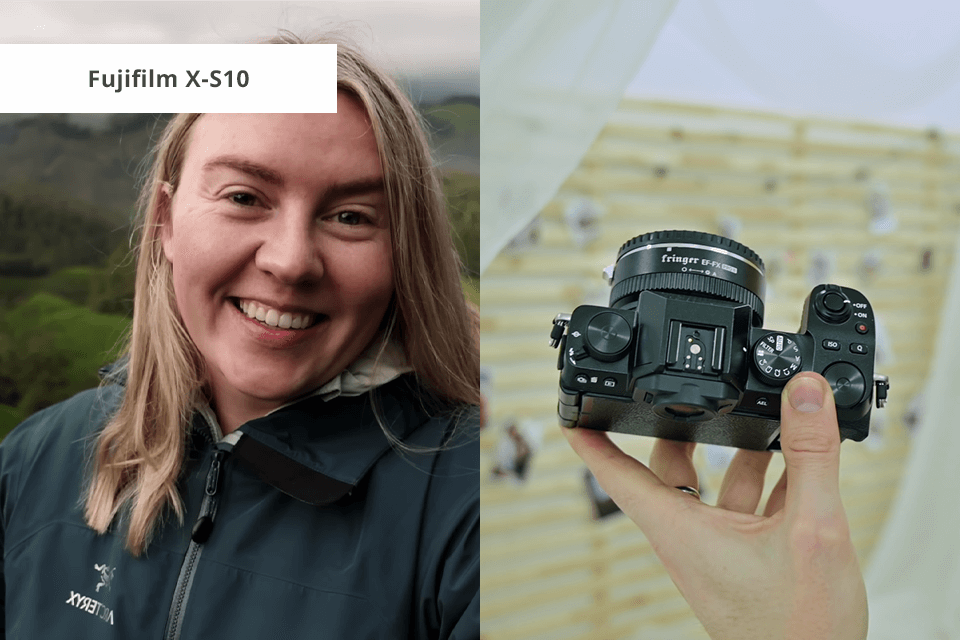
X-S10 is probably the cheapest mirrorless camera with IBIS that boasts so many benefits like
an adjustable touchscreen, an amazing APS-C sensor, an effective 5-axis IBIS that delivers up to 6 stops shutter speed compensation, and fantastic color profiles for pic and videos, as well as a variety of 4K video modes.
This model also stands out with its ergonomic design and a comprehensive set of features any content creator would definitely appreciate. All these made me sure that the Fujifilm X-S10 is just the best camera under 1000 dollars with IBIS.
Specs:
|
Type |
Mirrorless |
|
Sensor |
26.1MP X-Trans CMOS 4 APS-C sensor |
|
ISO |
160-12,800 expandable to ISO 80-51200 |
|
Video resolution |
DCI 4K, Full-HD |
|
Viewfinder |
2.36-million-dot EVF (100% coverage) with 0.62x magnification |
|
AF system |
Intelligent hybrid with up to 425 selectable AF points |
|
Dimensions |
126.0x85.1x65.4mm |
|
Weight |
465g including battery and card |
I tested this Fujifilm camera with IBIS in different lighting environments, and I made sure that the reliability of its stabilization system was on top. Whether I use it as a camera for night photography or shoot at a slower shutter speed to let in more light, its top-level IBIS system allows achieving sharp and clear results.
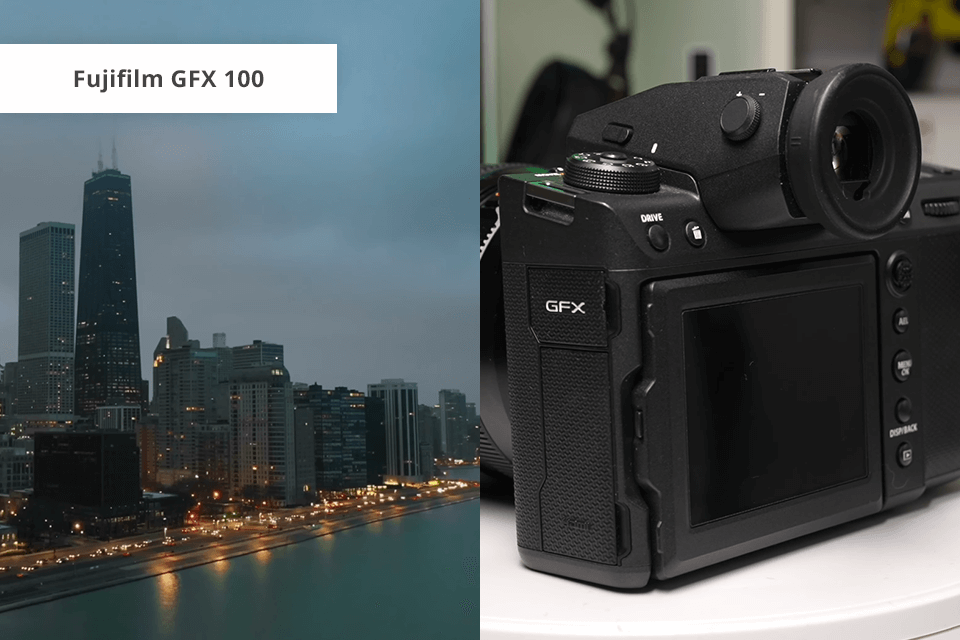
Another feature I like is its handy dual grip design, which makes the construction ideal for long-lasting photo sessions. This model also produces images of incredible quality. Equipped with a highly functional sensor, the device can capture every detail when shooting both landscape and studio photography.
I tested the camera with the GF 63mm f/2.8 R WR lens and was extremely pleased with its performance. With its mechanical shutter at a shutter speed of 1/15 sec, I managed to achieve an amazing 40% hit rate, which increased almost 100% at 1/30 sec. I could never have expected such results and performance with a medium format camera when shooting handheld.
Specs:
|
Type |
Medium format mirrorless |
|
Sensor |
102Mp Medium format (43.8 x 32.9mm) CMOS with Bayer colour filter array |
|
ISO |
Photo: 100-12,800 expandable to 50-102,400, Video: 200-12,800 expandable to 50-25,600 |
|
Video resolution |
4K |
|
Viewfinder |
0.5-inch 5.76million-dot OLED |
|
AF system |
Intelligent Hybrid AF (contrast AF / phase-detection AF) with up to 425 selectable AF points |
|
Dimensions |
156.2mm x 163.6mm x102.9mm (inc EVF) |
|
Weight |
1,400g including EVF, 2x battery & memory card |
The Nikon Z6 stands out among other cameras with an embedded 5-axis stabilization system, which delivers 5EV of shutter speed compensation. Thanks to in-body IS, I do not need to carry Nikon lenses, which reduces the weight of my shooting setup considerably.
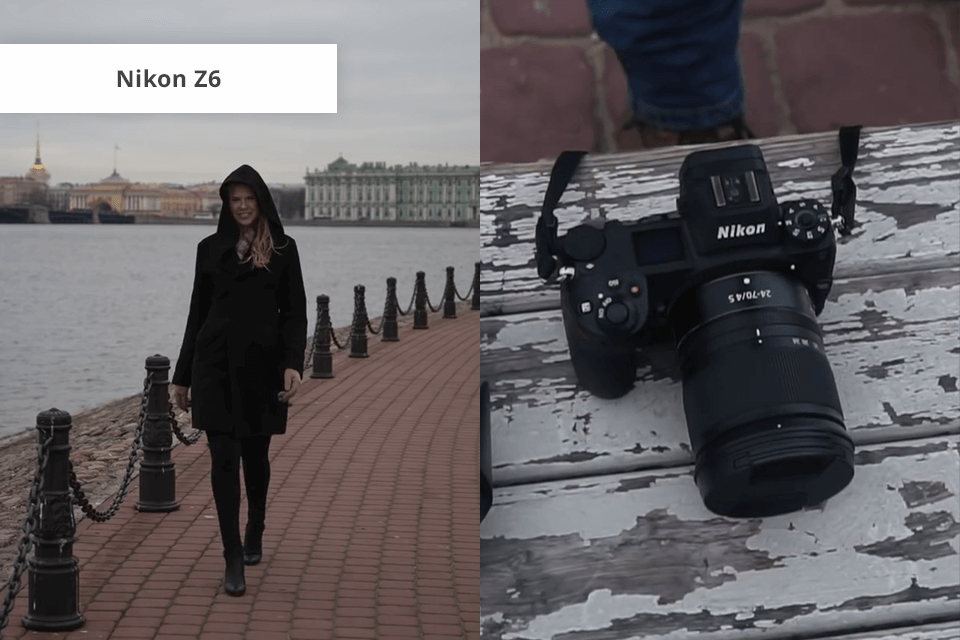
This Nikon photography camera is a top-level full-frame model with an extensive toolkit, which makes it one of the greatest Nikon cameras with IBIS. Fitted with handling from a Nikon DSLR and offering the benefits of a mirrorless camera, the Z6 has an EVF that is much better than an optical viewfinder.
Specs:
|
Type |
Full-frame (FX) mirrorless |
|
Sensor |
24.5Mp backside illuminated (BSI) sensor |
|
ISO |
Auto, 100-51200 (expands to 50-204800) |
|
Video resolution |
4K UHD, Full HD |
|
Viewfinder |
0.39-inch 2,360,000-dot OLED electronic viewfinder |
|
AF system |
Hybrid with phase and contrast detection |
|
Dimensions |
134 x 100.5 x 67.5mm |
|
Weight |
675 g with battery and memory card, 85 g camera body only |
After trying out Lumix S1, I can safely say that this a high-end Panasonic camera suitable for professional and aspiring photographers, who are looking for a customizable device.
I was impressed by its High-Resolution mode, which allows shooting a series of pics with tiny sensor movements between each frame to merge them into a single raw file. I took a sequence of amazing landscape pics from the last travel to Miami capturing even tiny details.
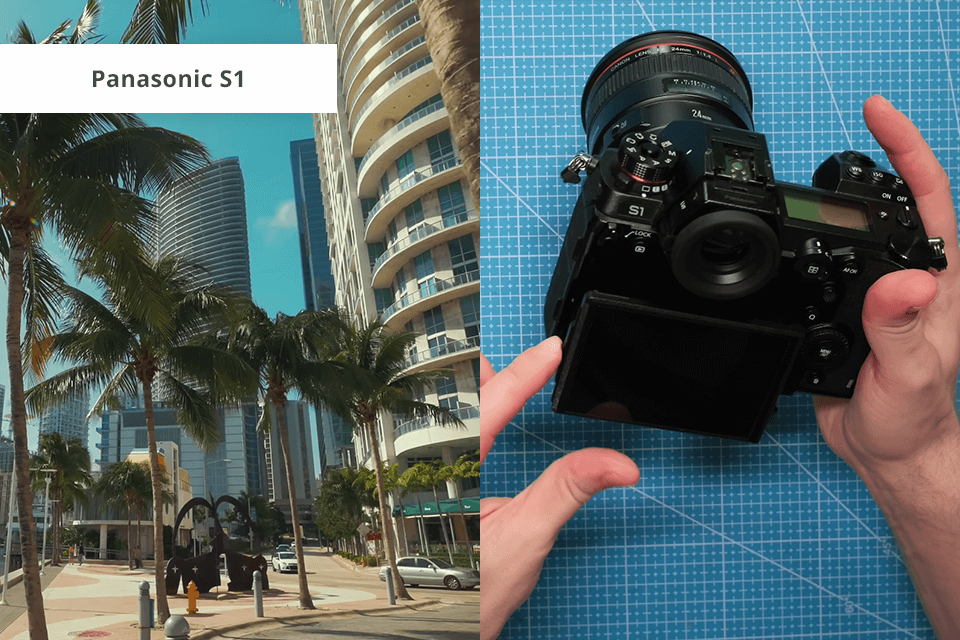
This Panasonic camera with IBIS is fitted with the dual IS system, which stabilizes photos and videos just perfectly. I checked the performance of this 4k video camera while shooting a handheld video in poor lighting conditions. As a result, all images were crisp and videos – smooth, which is incredible given that I did not use a tripod.
Specs:
|
Type |
Full-frame mirrorless |
|
Sensor |
24.2MP full-frame (23.8×35.6mm) |
|
ISO |
100 to 51,200 in Auto Mode (Extended: 50 to 204,800) |
|
Video resolution |
4K |
|
Viewfinder |
21 mm 5,760,000 dot built-in electronic |
|
AF system |
Auto and Manual |
|
Dimensions |
148.9 x 110 x 96.7 mm |
|
Weight |
1021 g with battery |
The A7 III is one of the best Sony cameras offering a variety of versatile features for shooting excellent photos and videos. It has a 5-axis optical in-body IS system, which impressed me with the ability to extend my hand-held shutter speed by 5EV.

I decided to test this Sony camera with IBIS to capture beautiful scenes of the Mississippi River, which is full of motion, so keeping the camera steady was not an easy task. However, A7 III showed excellent stabilization performance, enabling me to shoot the dynamic scenery of St. Louis and Memphis with ease.
Specs:
|
Type |
Full-frame mirrorless |
|
Sensor |
24.2Mp Full frame (35.6×23.8mm), Exmor R CMOS sensor |
|
ISO |
Stills: 100-51,200, expandable to 50-204,800, Video: 100-51,200, expandable to 100-102,400 |
|
Video resolution |
4K |
|
Viewfinder |
0.5-inch OLED with 2,359,296 dots |
|
AF system |
Hybrid with 693 phase detection points and 425 contrast detection points |
|
Dimensions |
127.0 x 95.6 x 73.7mm |
|
Weight |
650g |
The Sony A6600 is Sony’s flagship APS-C format travel camera, which is an ideal option for aspiring photographers and videographers who are looking for flexibility when shooting in different lighting conditions.
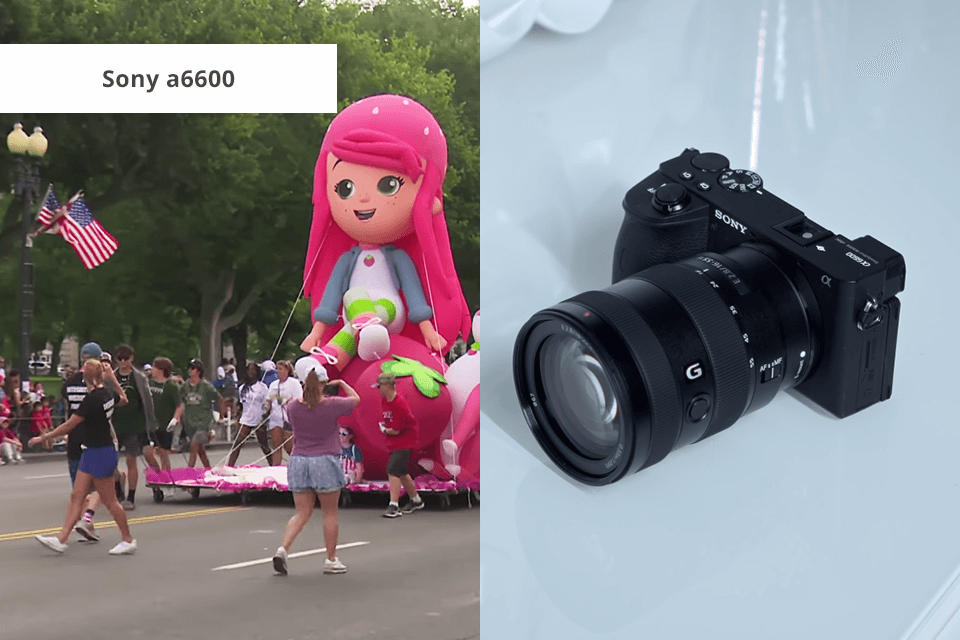
I was most impressed by the 5-axis in-body image stabilization system that provides a 5.0-step shutter speed advantage, which demonstrated excellent results. Even when I visited the fair in honor of the 4th of July it produced stunning vibrant and crisp shots in low light.
Specs:
|
Type |
Full-frame mirrorless |
|
Sensor |
24.2Mp Full frame (35.6×23.8mm), Exmor R CMOS sensor |
|
ISO |
Stills: 100-51,200, expandable to 50-204,800, Video: 100-51,200, expandable to 100-102,400 |
|
Video resolution |
4K |
|
Viewfinder |
0.5-inch OLED with 2,359,296 dots |
|
AF system |
Hybrid with 693 phase detection points and 425 contrast detection points |
|
Dimensions |
127.0 x 95.6 x 73.7mm |
|
Weight |
650g |
OM-5 can stabilize the shakiest situations with up to 6.5 steps of compensation, which is incredible. But when I tested its performance with a compatible stabilized lens, it was capable of 7.5EV shutter speed compensation, proving itself a perfect option for travel photographers who do not want to carry a tripod for vlogging.
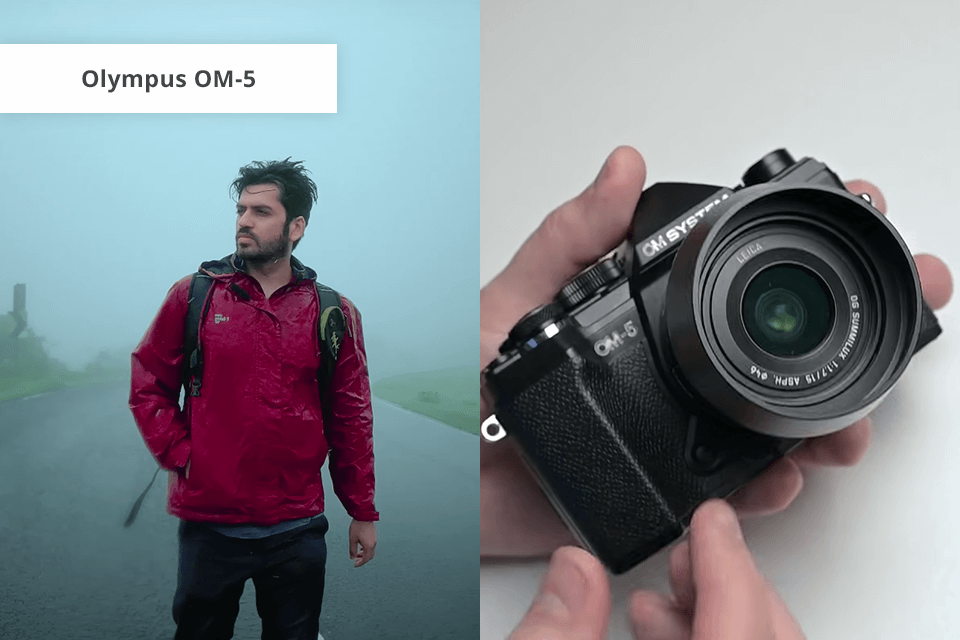
This Olympus camera offers many cutting-edge and even unique features like Live ND (for slow shutter speed shots of water, etc.), Starry Sky AF, a high-res multi-shot mode for static scenes, etc.
When testing the camera, I was pleased with its excellent color reproduction, which made me think that this is the perfect option among the smallest mirrorless cameras with IBIS.
Specs:
|
Type |
Mirrorless |
|
Sensor |
20.4Mp Live MOS Micro Four Thirds sensor |
|
ISO |
64-25,600 |
|
Video resolution |
C4K, 4K, Full HD |
|
Viewfinder |
2,360,000-dot OLED, magnification 1.37x, 27mm eye point |
|
AF system |
Hybrid with 121 (all cross-type) phase-detection AF points |
|
Dimensions |
125.3 x 85.2 x 49.7mm |
|
Weight |
414g including battery and memory card, 366g body only |
Olympus is a master of embedding IBIS technology, producing cameras that you can easily shoot with for a long time even handheld. OM-D E-M1 III is fitted with smaller Micro Four Thirds sensors, which are easier to stabilize, which results in an amazing 7.5 stops of stabilization.
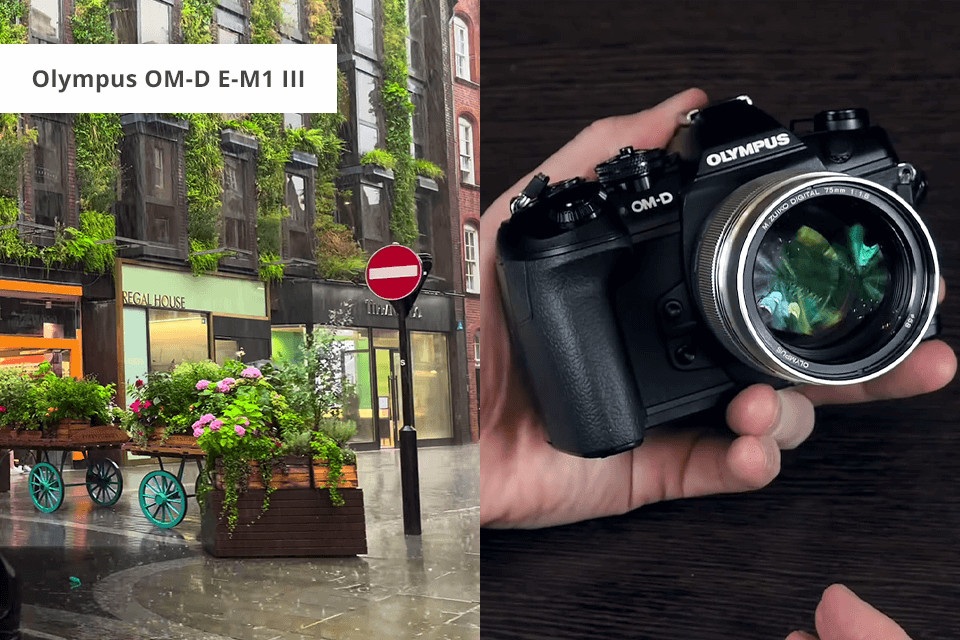
I was eager to test this smallest camera IBIS in dimly lit spaces. It managed to shoot cityscapes in absolute darkness with exposure times reaching 10 seconds, and the quality of the images was on top.
Thanks to the 20-MP sensor, photos are full of detail, which is especially important when shooting architecture. The water-sealed body makes it one the best mirrorless cameras for travel, and I could safely use it in rainy or foggy weather.
Specs:
|
Type |
Mirrorless |
|
Sensor |
Four Thirds type 20.4 MP Live MOS sensor |
|
ISO |
64-25,600 |
|
Video resolution |
C4K |
|
Viewfinder |
2,360,000-dot electronic viewfinder |
|
AF system |
Hybrid with 121-point all cross-type focus points |
|
Dimensions |
134.1 x 90.9 x 68.9mm |
|
Weight |
504g body only, 580g with battery and SD card |
The Olympus OM-D E-M10 Mark IV is one of the best budget cameras with IBIS, which enables photographers to shoot steady pics at slower shutter speeds. This technology allows taking perfect photos even in darkness, or when recording handheld videos. What I like most about this budget camera with IBIS is its ergonomic design and intuitive controls.
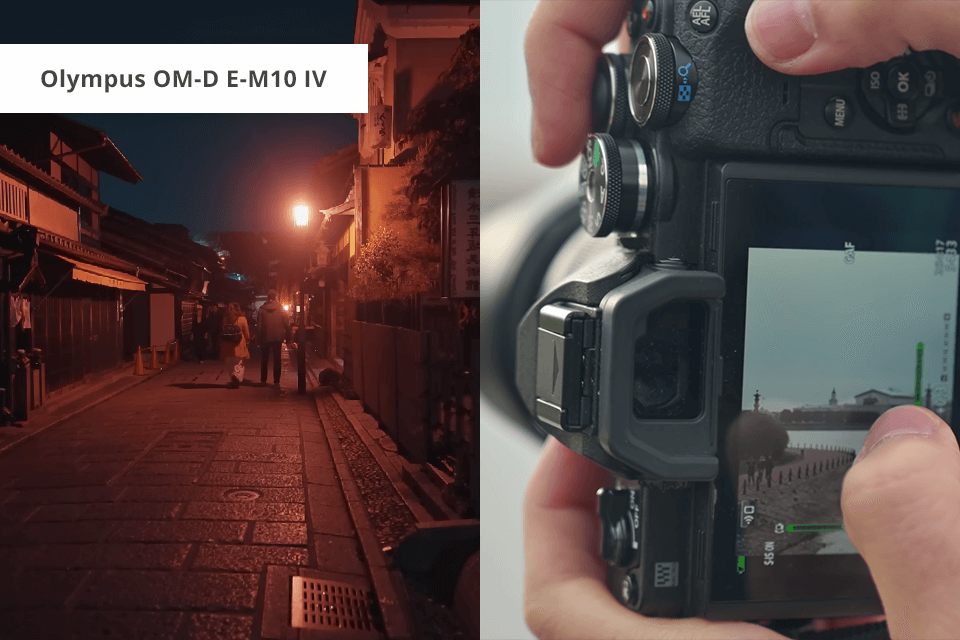
In my opinion, it is one of the greatest budget mirrorless cameras for beginners who are looking for compact solutions. It is fitted with a smaller MFT sensor than the more expensive alternatives.
Furthermore, the MFT lenses are smaller than those used by the APS-C model. The MFT system is compatible with multiple lenses, so the selection of lenses I can attach to it is really impressive.
Specs:
|
Type |
Micro Four Thirds mirrorless |
|
Sensor |
Four Thirds Type 20.3Mp Live MOS |
|
ISO |
80-25,600 |
|
Video resolution |
4K, Full HD, HD |
|
Viewfinder |
2,360,000-dot electronic with 1.23x magnification and 19.2mm eye point |
|
AF system |
Contrast detection with up to 121 points |
|
Dimensions |
121.7x84.4x49mm |
|
Weight |
383g including battery and SD card |